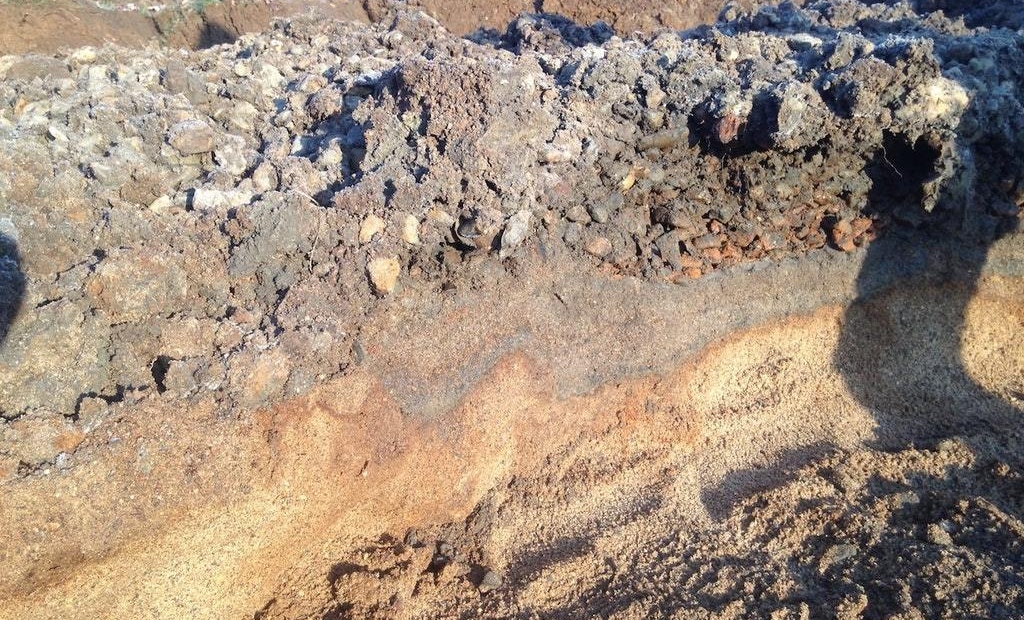
Dirty rock has fines that can cause system malfunction by reducing the long-term acceptance rate of the underlying soil or media. Unwashed rock may be able to meet these specifications, but most rock needs to be washed to remove fine soil components.
Interested in Onsite Systems?
Get Onsite Systems articles, news and videos right in your inbox! Sign up now.
Onsite Systems + Get AlertsWashed rock is used as distribution media in soil treatment area, media filters and in interceptor drains. It is obtained from quarries and gravel pits and is produced by screening, grading and washing to meet the desired specifications.
In general, rock should be clean, sound and durable. Proper washing of the rock is critical to remove fine particles, such as silt and clay. If the aggregate washing process is inadequate, fine particles on the rock could ‘wash off’ the rock surface when the system is loaded with effluent. This could cause a layer of fines to accumulate along the infiltrative surface, potentially reducing its ability to transmit wastewater into the native soil or sand media. Uniform size is preferred to maximize the surface area and amount of void space available in the media for effluent storage. The size of typical washed rock varies from 1/2 to 2 1/2 inches.
The durability of the rock is also an important characteristic. The rock must be relatively hard. Softer rock material may break into smaller pieces, resulting in a reduction in the distribution and storage attributes required in the distribution media. In addition, the washed rock must be resistant to breaking down in either the saturated or potentially corrosive environment that the rock will be subjected to when effluent is applied to it. Limestone and other potentially soft rocks cannot decay or deteriorate when exposed to sewage and soil. Currently, there are two specified tests to determine this suitability:
- Loss of abrasion
- Loss of soundness
The purpose of these two tests is to help ensure that limestone and other potentially soft rock does not break down when transported and used in sewage treatment systems. Thus, drainfield rock shall:
- have a loss of abrasion of not more than 40% using AASHTO Method T 96 (Los Angeles Rattler Test), and
- not have a loss of soundness using magnesium sulfate of more than 15% at the end of five cycles for any coarse fraction using AASHTO Method T 104.
Check with local codes and system design regarding types of rocks that may be restricted due to their durability.
The rock also must be clean. Dirty rock has fines (silt and clay particles) that can cause system malfunction by reducing the long-term acceptance rate of the underlying soil or media. Unwashed rock may be able to meet these specifications, but most rock needs to be washed (double or triple washed) to remove fine soil components. If the rock is dirty, a large dust cloud may form when the media is dumped during delivery or placed in the STA. A sieve test can be performed on the rock to accurately determine the gradation of rock, including the amount of fines. A jar test can be used to check the cleanliness of rock in the field by placing 3 to 4 inches of rock in a quart jar, adding water to fill the jar almost completely, shaking for one minute, waiting for 30 minutes for settling to occur, and checking if a film forms on the surface and if fines collect. There should be no measureable amount of fine material in the jar. If you can measure the fines, a sieve analysis should be performed to determine the exact amount of fines by filtering the water and determining the weight of the fines. Check with local regulations as to the permissible amount of fines.
Installation
When placing drainfield rock into an excavation, the installer should ensure the rock is of suitable quality and placed into the excavation in a fashion that maintains the soils infiltrative surface.
Verify the quality of drainfield rock when it is delivered to the site to ensure it meets the required specifications before using it in the soil treatment system. If the quality of the aggregate washing process is poor, the silt and clay particles remaining on the surface of the drain rock will likely wash off when the system is loaded with effluent. This can result in a layer of fines accumulate along the infiltrative surface, thereby reducing the soil’s infiltrative capacity.
Furthermore, if drainfield rock is "mishandled" on site, it can become contaminated with grass, soil and other materials and debris as the rock is moved with heavy equipment. The pit or quarry operator and the installer can follow some simple best management practices when loading and moving drainfield rock around so it remains clean and will not become contaminated.
The following techniques can be used to help determine the suitability of drainfield rock:
- Test results from the plant — This would include the sieve analyses, soundness test and abrasion test (if using limestone).
- Collect independent samples — Properly collect drainfield rock samples, and test at a materials testing laboratory.
- Use of field screening techniques — Screening tools do not replace the testing performed by qualified laboratories. However, screening tools can help both the installer and/or inspector to ‘verify’ the general suitability of drainfield rock.
About the author: Sara Heger, Ph.D., is a researcher and educator in the Onsite Sewage Treatment Program in the Water Resources Center at the University of Minnesota, where she also earned her degrees in agricultural and biosystems engineering and water resource science. She presents at many local and national training events regarding the design, installation and management of septic systems and related research. Heger is the President-Elect of the National Onsite Wastewater Recycling Association and she serves on the NSF International Committee on Wastewater Treatment Systems. Ask Heger questions about septic system design, installation, maintenance and operation by sending an email to kim.peterson@colepublishing.com.





